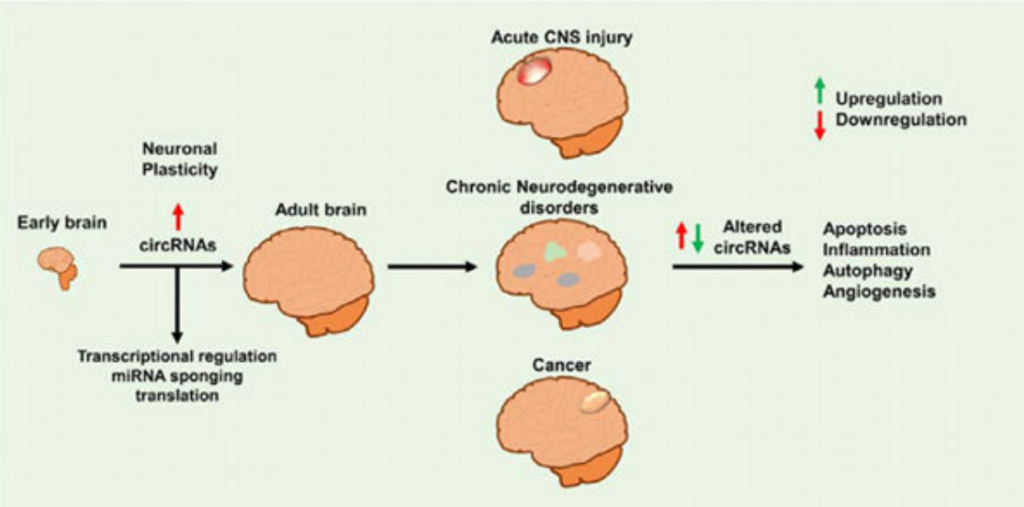Suresh L. Mehta1, Robert J. Dempsey1, Raghu Vemuganti1,2
1Department of Neurological Surgery, University of Wisconsin, Madison, WI
2William S. Middleton Veterans Hospital, Madison, WI

Abstract
In mammals, many classes of noncoding RNAs (ncRNAs) are expressed at a much higher level in
the brain than in other organs. Recent studies have identified a new class of ncRNAs called
circular RNAs (circRNAs), which are produced by back-splicing and fusion of either exons,
introns, or both exon-intron into covalently closed loops. The circRNAs are also highly enriched in
the brain and increase continuously from the embryonic to the adult stage. Although the functional
significance and mechanism of action of circRNAs are still being actively explored, they are
thought to regulate the transcription of their host genes and sequestration of miRNAs and RNA
binding proteins. Some circRNAs are also shown to have translation potential to form peptides.
The expression and abundance of circRNAs seem to be spatiotemporally maintained in a normal
brain. Altered expression of circRNAs is also thought to mediate several disorders, including
brain-tumor growth, and acute and chronic neurodegenerative disorders by affecting mechanisms
such as angiogenesis, neuronal plasticity, autophagy, apoptosis, and inflammation. This review
discusses the involvement of various circRNAs in brain development and CNS diseases. A better
understanding of the circRNA function will help to develop novel therapeutic strategies to treat
CNS complications.